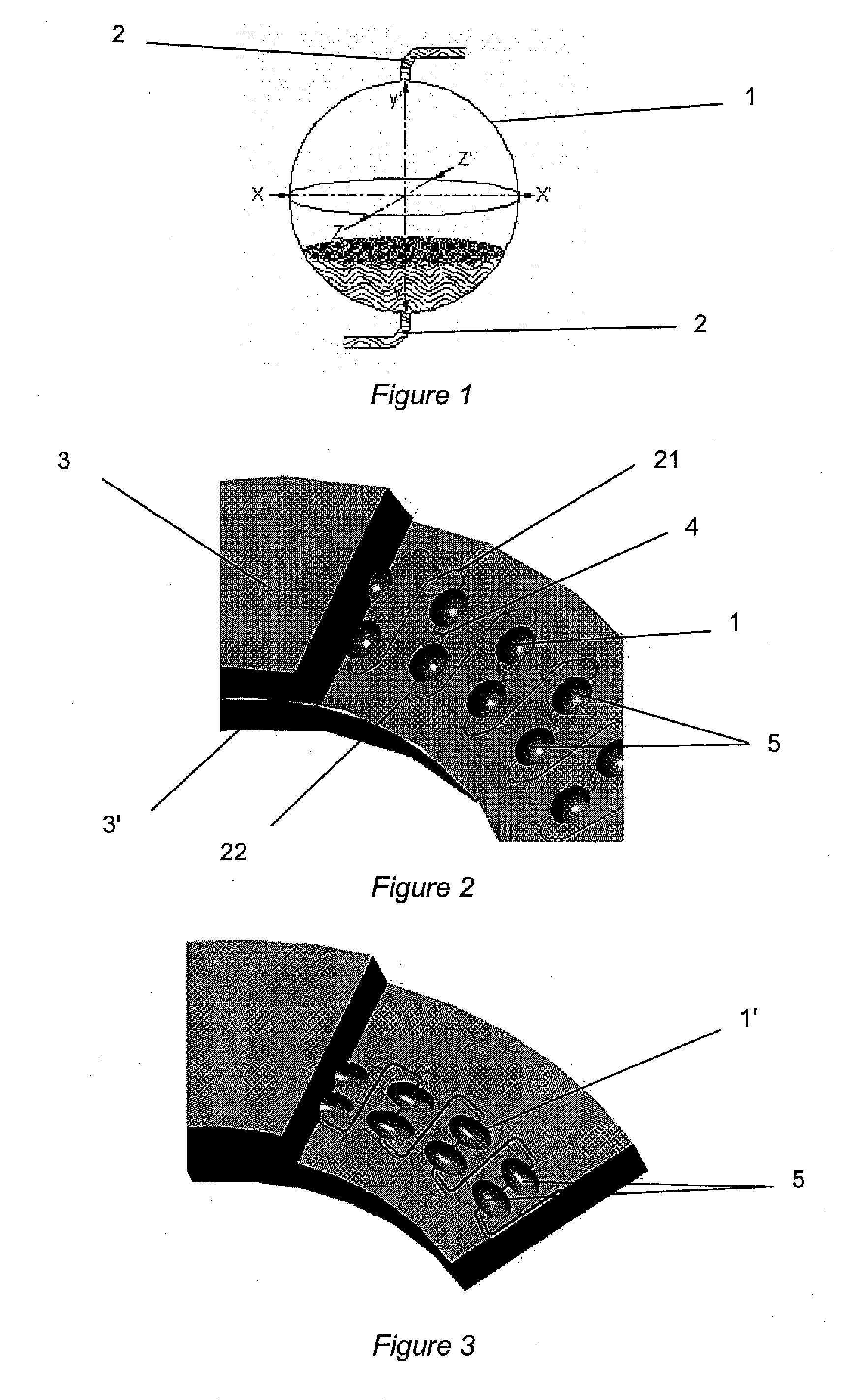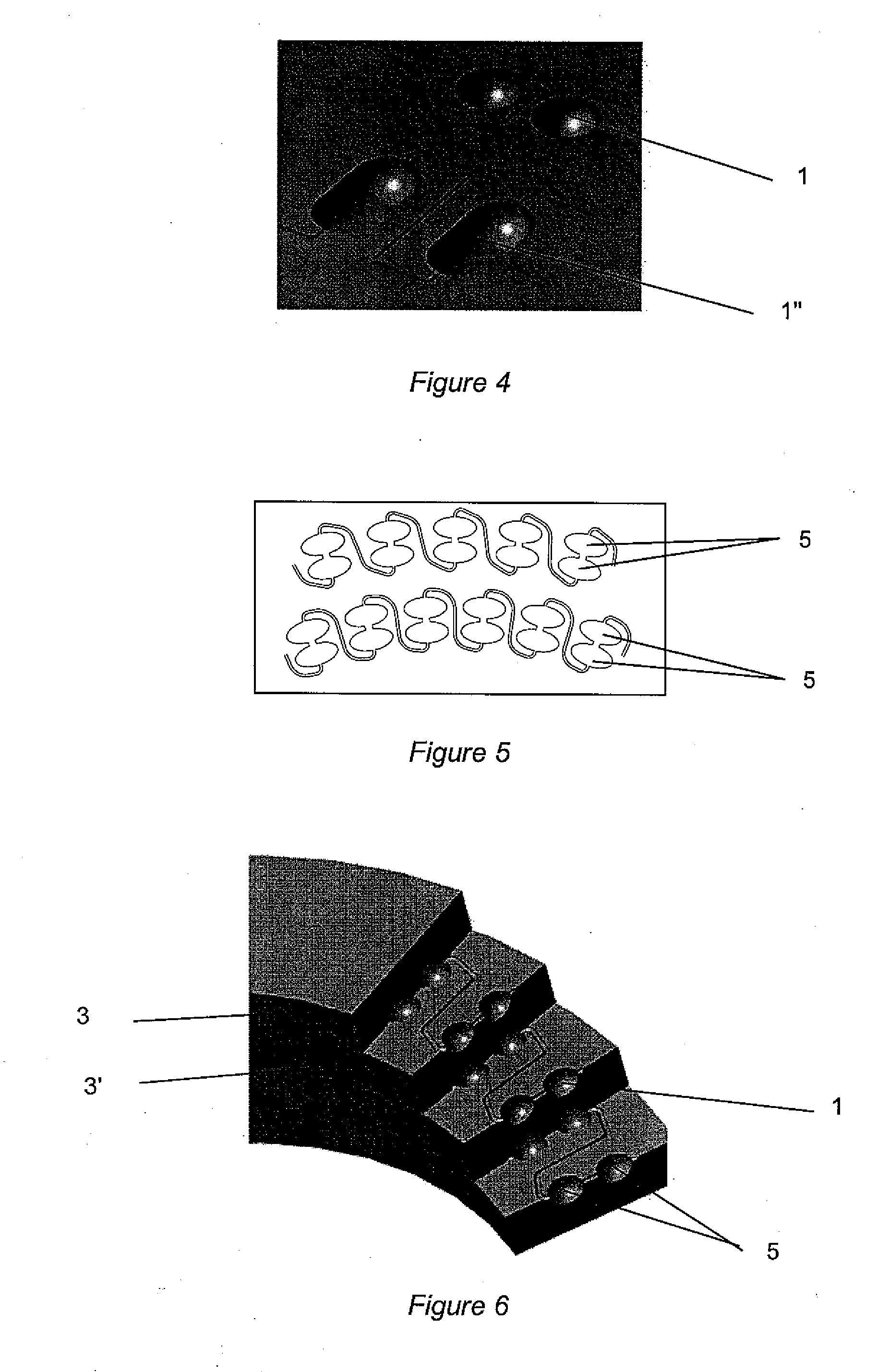Cells and connecting channels for centrifugal partition chromatography devices
a technology of liquid liquid chromatography and connecting channels, which is applied in the field of cells and their connecting channels of centrifugal liquid liquid chromatography devices, can solve the problems of reducing the efficiency and productivity of the device, aging of the device, and increasing the dead volume, so as to increase the efficiency and productivity of the chromatography devi
- Summary
- Abstract
- Description
- Claims
- Application Information
AI Technical Summary
Benefits of technology
Problems solved by technology
Method used
Image
Examples
Embodiment Construction
[0032]FIG. 1 illustrates a cell (1) according to the invention. The base of this cell (1) has a revolution geometry. The shape of the cells according to the invention can thus range from spheres to spheroids to other similar revolution shapes by modifying the respective length ratios of axes X-X′, Y-Y′ and Z-Z′. Axis Z-Z′ being parallel to the main axis of rotation (8) of the disc comprising the cells illustrated in FIG. 8, axis Y-Y′ being radial with respect to the disc and axis X-X′ orthogonal to the other two axes (FIGS. 1, 2, 3, 4, 5, 6 and 7).
[0033]Such a shape, compared with the cells with angular parts of the prior art, favours better dispersion of the mobile phase in the stationary phase and, consequently, allows better matter exchange, which leads to improved separation. The axis of revolution of the shape of the cells is close to the radial direction of the discs. Preferably, the axis of revolution is in the radial direction.
[0034]Channels (2, 4) connecting these cells hav...
PUM
| Property | Measurement | Unit |
|---|---|---|
| geometric shape of revolution | aaaaa | aaaaa |
| dimension | aaaaa | aaaaa |
| dimensions | aaaaa | aaaaa |
Abstract
Description
Claims
Application Information
 Login to View More
Login to View More - R&D
- Intellectual Property
- Life Sciences
- Materials
- Tech Scout
- Unparalleled Data Quality
- Higher Quality Content
- 60% Fewer Hallucinations
Browse by: Latest US Patents, China's latest patents, Technical Efficacy Thesaurus, Application Domain, Technology Topic, Popular Technical Reports.
© 2025 PatSnap. All rights reserved.Legal|Privacy policy|Modern Slavery Act Transparency Statement|Sitemap|About US| Contact US: help@patsnap.com



